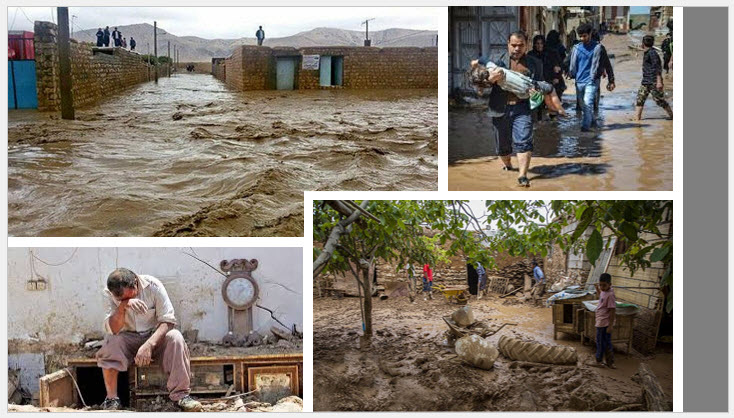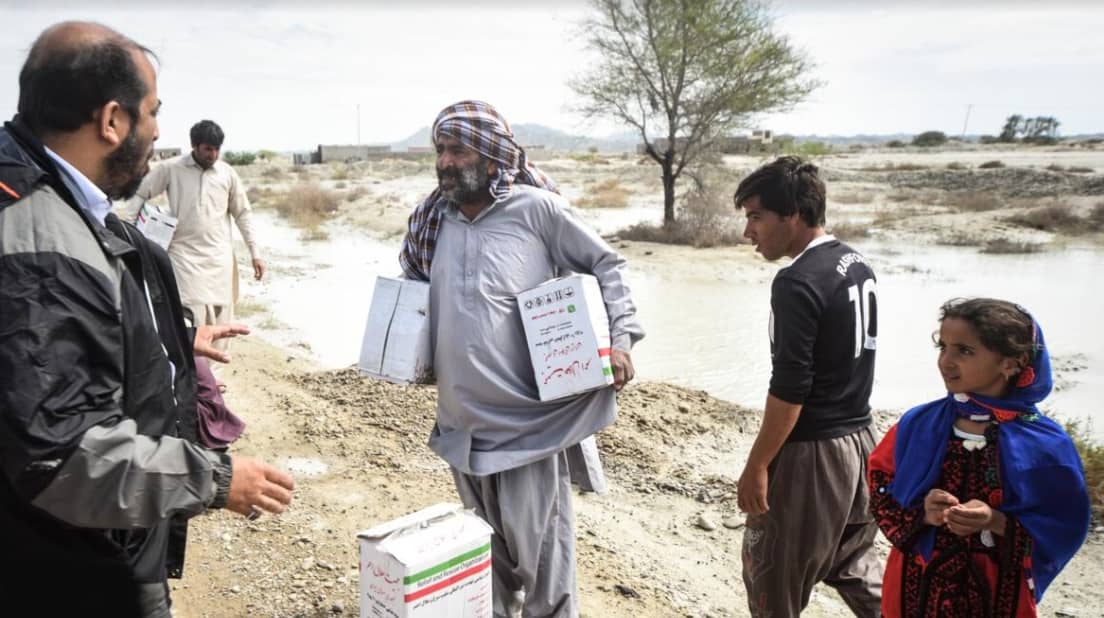
Recent reports indicate the tragic deaths of three Iranian citizens in Karvandar Town, Khosh District, alongside widespread damage and disruption in areas including Sistan and Baluchestan, Kushkunar Parsian, Hormozgan, and Asalouyeh.
The Islamic Republic News Agency (IRNA) reported that three of four missing railway workers were found deceased, approximately five kilometers downstream from the accident site in Karvandar. The workers, identified as Ehsan Nazari, Mohammadreza Reyhani, and Mansour Daliri, were reportedly railway engineers from Rafsanjan. Rescue operations continue for the fourth missing individual, highlighting the urgent and ongoing response efforts in the region.
The floods, which resumed with fresh rainfall early Tuesday, have injured three in Asalouyeh and disrupted life across the affected provinces. The state news agency ISNA relayed warnings from Iran’s crisis management organization about potential floods in five provinces, including Bushehr, Hormozgan, Kerman, Fars, and Sistan and Baluchestan. In response, twelve routes in Sistan and Baluchestan were closed, and seven adobe and mud-brick houses in Qasr-e Qand were destroyed, displacing numerous families.
Watch and judge how locals in Sistan and Baluchestan Province expose the #Iranian regime's inaction and #hypocrisy amid devastating floods in that region. pic.twitter.com/gEObkark1J
— NCRI-FAC (@iran_policy) March 5, 2024
The crisis underscores a broader systemic issue in Iran: the chronic underinvestment in essential infrastructure. Despite Iran’s historical prowess in hydraulic engineering, modern challenges such as climate change, recurrent droughts, and mismanagement have led to severe water resource issues. These challenges are particularly acute in rural communities that depend heavily on agriculture, making them extremely vulnerable to environmental disasters
Iran’s failure to effectively manage and harness its water resources has been a longstanding issue. Insufficient investment in modernizing irrigation systems and inadequate flood control measures are just some of the infrastructural shortcomings that exacerbate the effects of natural disasters like these floods.

For regions like Sistan and Baluchestan, improving flood control and emergency response capabilities is crucial. The current tragedy is a stark reminder of the human cost of neglecting these essential aspects of governance and infrastructure development.
Moving forward, Iranian authorities must address these systemic failures, invest in robust infrastructure, and enhance preparedness for natural disasters. The safety and well-being of its citizens must be a priority to prevent such tragedies in the future.

MEK Iran (follow us on Twitter and Facebook), Maryam Rajavi’s on her site, Twitter & Facebook, NCRI (Twitter & Facebook), and People’s Mojahedin Organization of Iran – MEK IRAN – YouTu







